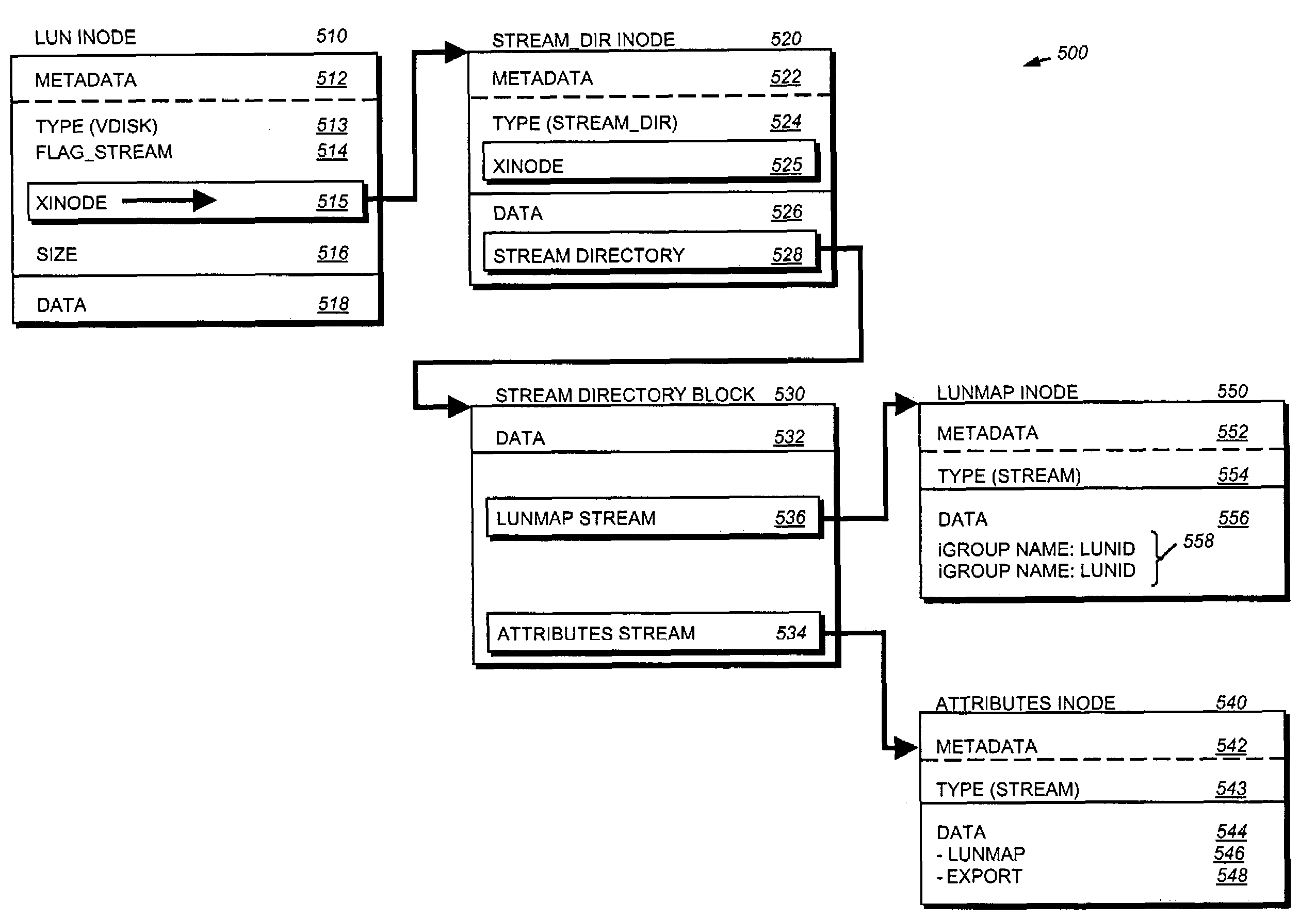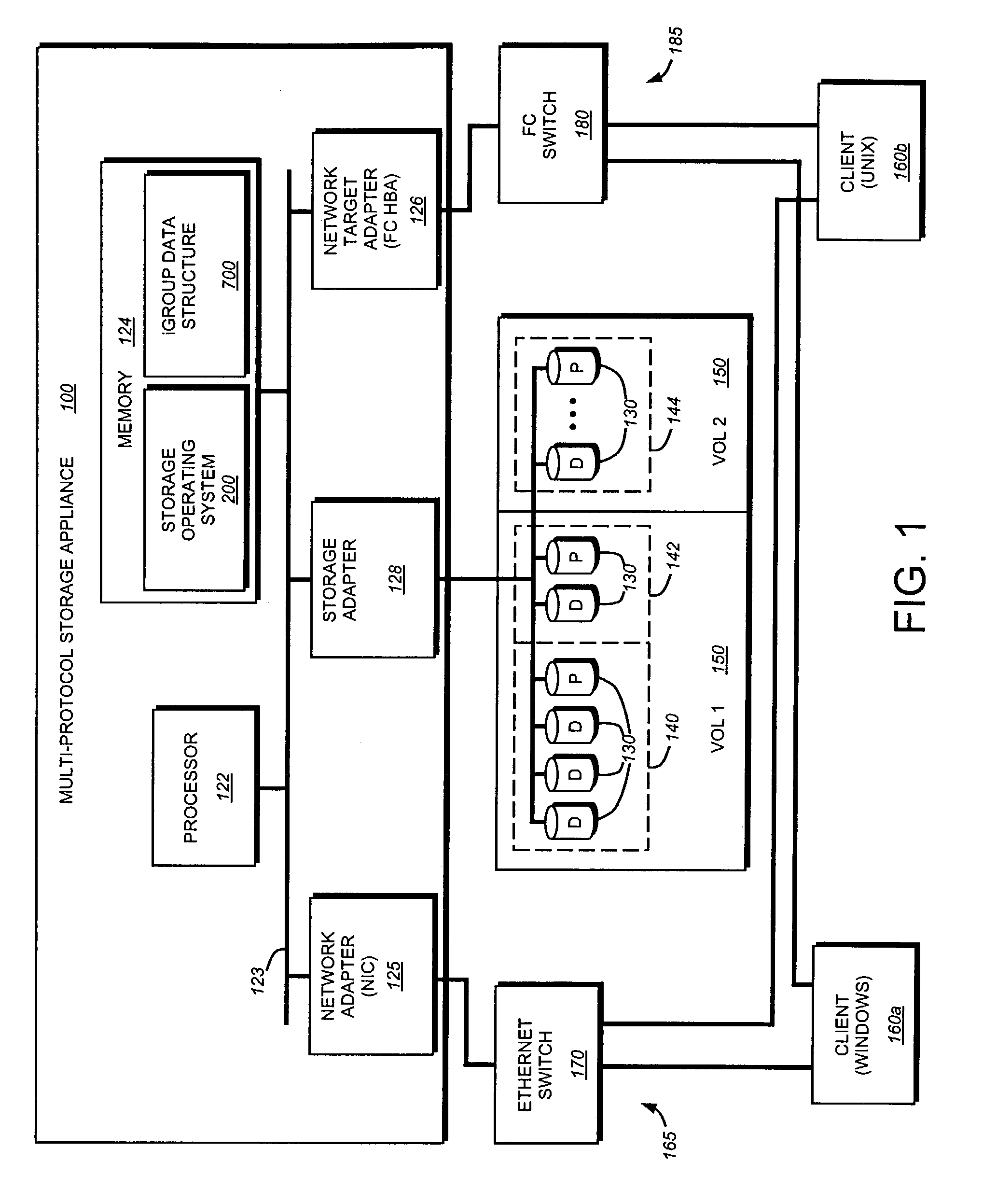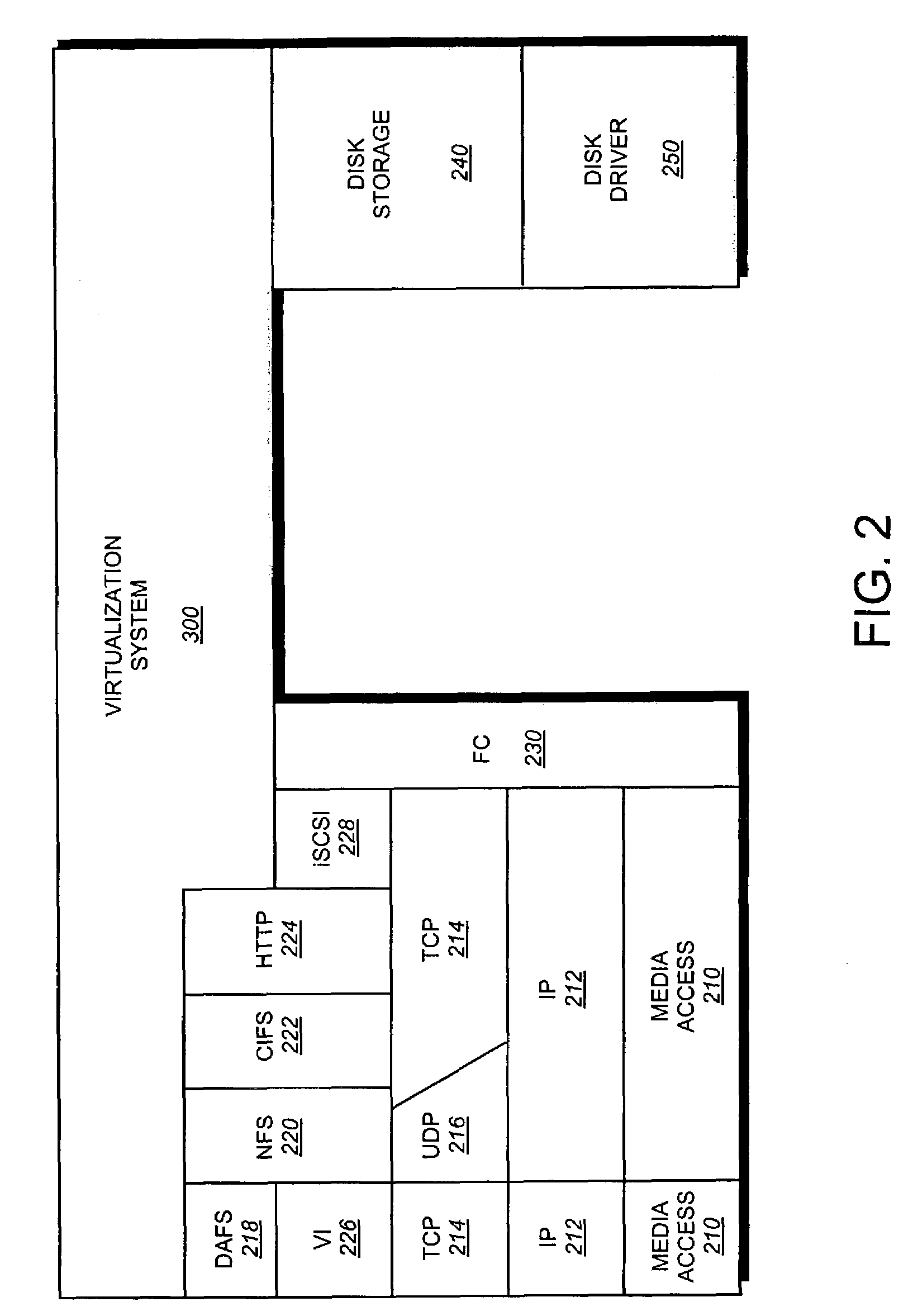Consistent logical naming of initiator groups
a logical name and initiator technology, applied in the field of network storage systems, can solve the problems of inefficient and possibly error-prone approach to accessing luns on a san storage system
- Summary
- Abstract
- Description
- Claims
- Application Information
AI Technical Summary
Benefits of technology
Problems solved by technology
Method used
Image
Examples
Embodiment Construction
[0021]FIG. 1 is a schematic block diagram of a multi-protocol storage appliance 100 that may be advantageously used with the present invention. The multi-protocol storage appliance is configured to provide storage service for both file and block protocol access to information stored on storage devices in an integrated manner. In this context, the integrated multi-protocol appliance denotes a computer having features such as simplicity of storage service management and ease of storage reconfiguration, including reusable storage space, for users (system administrators) and clients of network attached storage is (NAS) and storage area network (SAN) deployments.
[0022]The multi-protocol storage appliance 100 is illustratively embodied as a storage system comprising a processor 122, a memory 124, a plurality of network adapters 125, 126 and a storage adapter 128 interconnected by a system bus 123. The multi-protocol storage appliance 100 also includes a storage operating system 200 that p...
PUM
 Login to View More
Login to View More Abstract
Description
Claims
Application Information
 Login to View More
Login to View More - R&D
- Intellectual Property
- Life Sciences
- Materials
- Tech Scout
- Unparalleled Data Quality
- Higher Quality Content
- 60% Fewer Hallucinations
Browse by: Latest US Patents, China's latest patents, Technical Efficacy Thesaurus, Application Domain, Technology Topic, Popular Technical Reports.
© 2025 PatSnap. All rights reserved.Legal|Privacy policy|Modern Slavery Act Transparency Statement|Sitemap|About US| Contact US: help@patsnap.com



